Video
youtube
Giselle Stanborough’s work raises questions about the colonisation of our social activities by large corporations and the way social media and dating apps are changing our intimate relationships.
Her new multi-platform artwork Lozein: Find the Lover You Deserve (2016) is based around a fictional match-making service and explores ‘the quantification of love in the digital age’. It includes interventions in the MCA’s digital infrastructure, such as its website and social media streams; a product launch and a conference in which the artist/entrepreneur delivers a series of lectures. In the style of corporate promotion and data visualisation, the company’s animations and slogans will promote the fictional Lozein brand throughout the gallery environment during the exhibition.
Stanborough describes her work as ‘a TED talks style tragedy addressing the hubris of a humanity that expects technology to resolve the discomfort of our existential loneliness, something that may itself be the fundamental defining characteristic of the human condition: the failed promises of language to provide meaningful access to another consciousness’.
3 notes
·
View notes
Text
undefined
tumblr
glitch - using technology in a broken way
3 notes
·
View notes
Video
youtube
Classic Daito Manabe face dancing
2 notes
·
View notes
Text
An experiment for assessment 2
ASSESSMENT 2
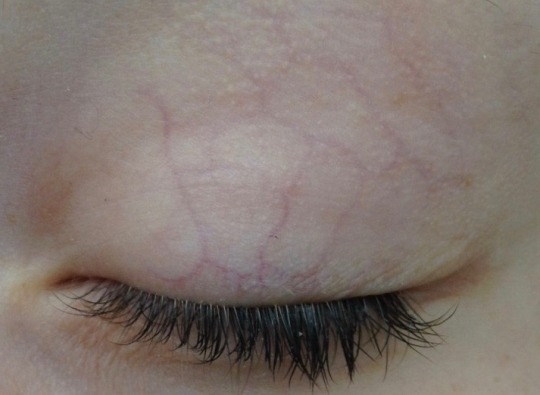

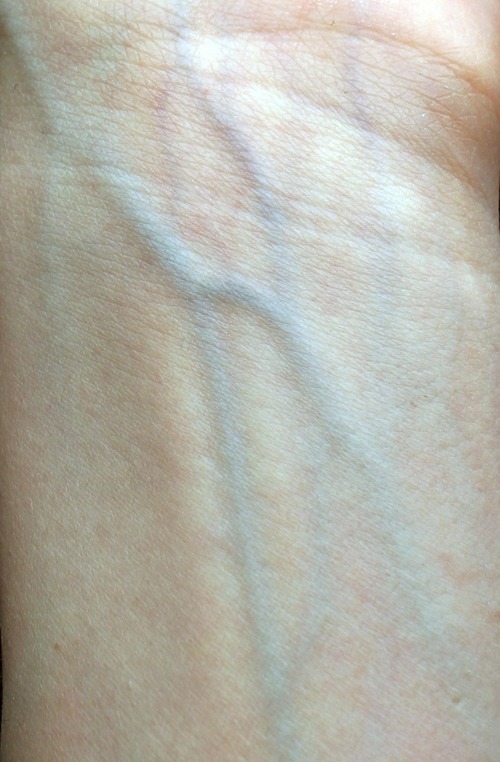

- capturing the human ecology -
In this experiment, I tried to find a direct visual connection between the landscapes of the human body and the natural world - exploring both environmental landscapes and ecologies and natural artefacts
In continuing my experimentation and my project, I plan on capturing my own images of the environment and of the human anatomy so I have control over the images to thus make a clearer and more visual connection
leaf skeleton: https://drkrishi.com/dry-leaf/
river: http://theavant-guardian.blogspot.com/2012/06/birds-eye-views.html
5 notes
·
View notes
Video
vimeo
@klidbury2018 Mackenzie’s incredible work exploring private and surveilled spaces.
Concept Statement:
A binary can be defined as a pair of terms holding meanings that oppose each other. However, when looking at how certain binaries have changed over time, and at factors that continue to blur the line between them, a complexity supersedes this simple definition. The public/private binary was one of great interest to me, as in a contemporary society that values and expects constant technological innovations, we have just recently started to realise how this could be affecting our private lives. The Internet, Social media, iPhones, Laptops, Smart TV’s, Google Homes and an immeasurable amount of other devices are used by individuals and installed in their homes. Any device is subject to being hacked, whether that be through the camera, the microphone, or most commonly, through accessing private details and information. This creates a problem, because as long as there is a device being used by the individual or is in the room, we are merely creating an illusion of privacy when we are in our personal and secluded spaces.
If we look at 18th Century Europe, in the wake of the “Coffeehouses”, the separation between an individual’s public and private spheres was very much evident. The public sphere was reserved for free discussion and debate regarding markets, politics, law and trade. On the other hand, the private sphere was reserved for family and home life, where one could be untainted from the influence of government and social institutions, allowing people to remain private and separate from public life. If we fast forward to our current society, this distinction is no longer so clear. Recent events such as Facebook’s failure to keep it’s users’ information secure, hackers accessing cameras on personal devices and iPhones and Google Homes listening to conversations, really accentuate how much the line between public and private has shifted, as the public sphere has become the more dominant of the pair. Even if we own these devices, anonymous third parties could still be able to watch and hear our behaviour, despite us being out of sight of public surveillance, and confined within our own homes.
My video ‘Lens’ attempts to explore the public/private binary by focusing on methods of surveillance, both through traditional security surveillance and a more ambiguous means, through personal devices. The video is not dramatic nor exciting, as it follows the mundane, everyday behaviour that is typical for a teenage boy (my brother), instead, I wanted to create an unsettling tone to the video as it makes the audience question whether they too could be being recorded and watched by an anonymous person, and to spur them into thinking how they’d feel if this breach of their privacy were to occur. I didn’t want to convey the idea that a violation of privacy is only significant if you had something to hide, but rather wanted to encompass the notion that people could be watching and listening to your behaviour without your permission which, in its entirety, is the result of the skewed public/private binary in our society. Usually property security cameras do not have audio input, therefore, in my experimentation I recorded the sounds the iPhone captured whilst being held in the hand, to mimic what would be heard if the conspiracy about phones listening to conversations were true. Using video recordings from my house’s security system, and from multiple devices such as the iPhone, Laptop and SmartTV’s in my home, the audience are not only able to see the individual outside the house, but once inside, it keeps recording, following him as he progresses through his ordinary afternoon activities.
Through conducting practice-led research, I came to the conclusion that a video format would be best to present my concept, as I wanted to closely reflect what would be seen from the hackers point of view, and therefore put the audience in the hackers’ position. The public/private binary in our society has become completely compromised due to the increasing presence of technology and access to the internet in our homes. How are we able to determine when we are completely private, and when we are not? By responding to my chosen question and interrogating this constructed binary, I have uncovered new insights about our private and public spheres, and the significance of them within our society.
From: https://klidbury2018.tumblr.com/post/178231699420/lens
2 notes
·
View notes
Photo
Beautiful experiments from week 6 exploring context and time through sunlight.






ADAD - Week 6 - Context And Time
In our week 6 work ‘Golden Hour’ we wanted to explore ways in which light can represent time and its ever-changing nature.
the reflection through fragments of the sunlight and its lack of distinction captures the essence of time being an ever-changing measurement upon the temporary stages of our lives.
7 notes
·
View notes
Photo

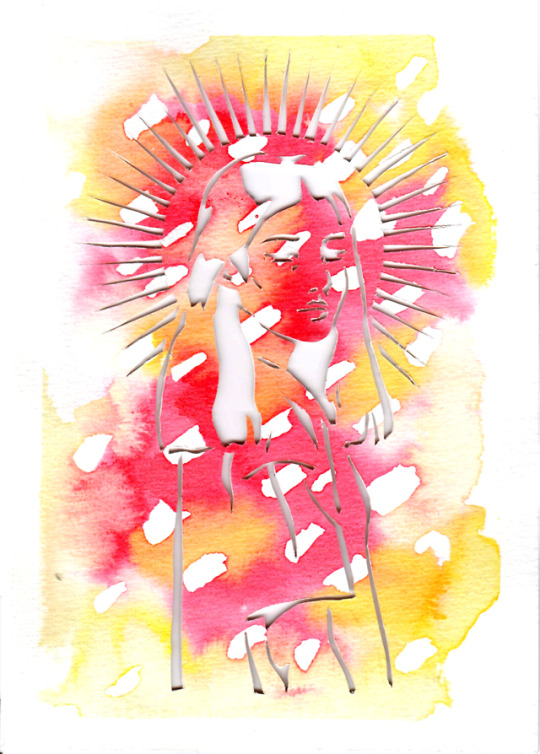

Concept Statement
God Is An Asian Woman (2018) , ink on watercolour paper, hand cut
Contemporary art and design often looks at the idea of constructed binaries, such as man/woman, soft/hard, straight/gay, dirty/clean, organic/synthetic. Considering the history of these ‘pairs’, how can art and design interrogate these binaries and offers new insights?
As a Vietnamese – Australian woman, I have gained an awareness of the stereotypes associated with my culture, gender and the intersection of the two. We are expected to be obedient wives and daughters, to be docile and submissive to the patriarch of our family, and in a broader sense, of society. From a Western perspective, we may be perceived as fragile dolls that WANT to be dominated. As a result, many Western men will pursue us, in the haze of their “yellow fever”. And although, these advances are unwanted, we may not be able to say ‘no’ since our culture has trained us to be obedient, to be quiet, to always make the other comfortable, and to always be helpful and polite.
God Is An Asian Woman (2018) attempts to subvert these underlying binaries through the depiction of the Asian woman as the all-powerful deity. The work is ultimately inspired by Asian cultural and gender expectations that often restrict Asian women’s opportunities in life and can be destructive to the mind and body. I wanted to bring light onto the issue from an Asian, female, perspective as white feminism often overshadows the struggles of women of colour. This is particularly evident in media as there is a growing amount of representation of powerful, influential women in popular culture, there is still sparse representation of Asian women in power, and when there is, it often plays into stereotypes (such as the rebel Asian with dyed hair, or the tigress). I believe it is important to address this intersectionality of feminism due to the permeance of gender expectation in cultures beyond the Western world.
The omni-potence of the woman is suggested through the halo that surrounds her head. The halo signifies that she is a holy figure, particularly God. Her sacred status can be perceived as a reference to Christianity where there is believed to be one god, whom is the Supreme Being, the creator and sustainer of the universe. Additionally, the woman maintains a steady gaze with the viewer, emphasising her all-mighty status as she does not appear docile or submissive. Furthermore, the red-yellow ink wash is reflective of traditional Asian colours (specifically, Vietnamese and Chinese culture, which were my strongest influences growing up). Red is symbolic of fortune, fertility, love and celebration whist yellow (or gold) stands for wealth, prosperity and happiness. Overall, these colours are warm and passionate, thus challenging the idea of docility and submissiveness in Asian women. Moreover, the white spots that disrupt the ink wash mimics spots of light, speckled on top of the woman. These spots of lights highlight the woman’s brilliance as she appears to be bathed in swathes of light, emphasising her warmth and goodness. Finally, the work is hand-cut on watercolour paper. The process for the artwork was labour-intensive yet ritualistic. In papercutting, it was as if I was carving my devotion and faith to God, who is an Asian woman, as opposed to a digital medium where there isn’t the exact experience of being ‘hands-on’ with the material.
Drawing off the first assessment, my research was more into experimenting with materials to portray my concept. As I explored the art of paper cutting, it took multiple attempts for me to achieve the aesthetics that I wanted. My process involved creating a design on Photoshop, keeping awareness of which areas I wanted to keep and omit so that the structure wouldn’t fall apart. I looked at references from East-Asian fashion models to help create my design. Then I applied masking fluid onto my paper and created an ink-wash on top of the fluid, to create a sun-speckled effect. Then, I printed out my design and traced it onto tracing paper, and then re-traced it on the back of the paper. Finally, I used an arts knife to cut out the negative space. In my research, I was inspired by many paper cutting artists, particularly Bovey Lee, who is a Chinese artist bridges East and West in her intricate hand-cut paper compositions.
6 notes
·
View notes
Text
Link to sound works here:
https://jessamynjean-adad1002.tumblr.com/post/178209532749/cncrt
Jessamyn’s beautiful inaudible compositions based on the lowest frequencies in the city, inaudible on your laptop speakers, barely audible on our headphones, probably explosive on a PA.
CNCRT
Concrete, concert, CNCRT, concentrate, concentrated, congregated, congregation, media, mass
What do we rebel against? What is it that restricts our needs, happiness or freedom? Dominant or overbearing power structures come in many shapes and forms… Concrete fixes us in place, taking over the landscape - solid and monotonous…
As a kid who grew up in the bush, if I wanted to scream the house down, the nearest neighbours would never come to help. It was about 45 minutes on the bus to get to a town (population ~4000) where I went to school. Beyond the immediate few acres of bushland, we were surrounded by superphosphate-laden cow-paddocks, with relatively untouched wilderness areas between and beyond the farmer’s fence lines. Moving to the city, it was impossible not to notice the effects of the new surroundings. Built up areas are often depressing to look at and you cant help but get the feeling that all the hard surfaces surrounding us have a deep reaching effect on the people and the place.
As a high-density material , concrete “reduces” airborne noise transmission by separating spaces. It is a barrier, however the sound is reflected - simply bounced somewhere else. For those commuting between ‘places,’ traversing common urban spaces can be stressful and many people try to resist the overstimulation and unnatural setting by escaping somehow, often through sound and headphones. We try to drown out sound with more sound. My work is based around the idea of re-claiming concrete, and rejecting all the noises reflected in built up areas.
For my process of experimentation, I began by borrowing a zoom from the resource centre to make a series of sound recordings in urban spaces (see map). Site 1 was next to a six lane arterial road in the centre of a commercial strip, site 2 was on the 7th floor of an urban carpark, in the middle of a commercial area, but not on a main road, site 3 was outdoors, right by COFA. I loaded these in to Abelton and noticed that despite fairly consistent noise across the frequency spectrum, the lower frequencies had a lot of extra activity, at the edge of human hearing range.. I compressed each sample and bumped the low end EQ up and then pitched it up just enough to define it properly. The resultant sound recordings give an intensified feeling of the discomfort that is normally difficult to register, without being completely unlistenable.
Next, inspired by the idea of graphic scores, I started trying to figure out ways to get spectrograms from each recording, to have a look at them and to compare them. I also began browsing through the book “handmade electronic devices” and started playing around with piezo discs. I also started putting the pieces together for a very simple handmade amplifier kit with speaker. I was initially drawn to the idea of the final work including hand wired electrical components. Future projects would be interesting to expand on these initial experiments.
Hacking still does not feel entirely canonized - taking back circuits and consumer objects still seems to be fairly strongly associated with illegal activity. “The bending of a pre existing system into serving a different end than it was designed for, is the ideal example of a tactic, bottom up resistance. “ (Söderberg, 2007). Ive always been interested in simple electronics of instruments and effects pedals but haven’t yet taken the time to learn how they work. Although relatively primitive electronic devices seem more and more outdated, it feels like a useful skill to have, as we head towards an apocalyptic event horizon.
For my final work, I created ear muffs using concrete to construct a physical barrier – a tangible reaction to hyper real world, reclaiming the substance that has taken over our world and reclaiming the void - one small act of resistance.
References
• Byrne, D. How music works. McSweeney’s., San Francisco (2012) pp. 18-22
• Cage, J. Silence – Lectures and writings, Wesleyan University Press (1976) pp. 109-126
• Collins, N. Handmade Electronic Music: The art of hardware hacking, Routledge, New York (2006) pp. 27-46
• Goldsmith, K. Uncreative Writing: Managing Language in the Digital Age, Columbia University Press, New York (2011)
• Harvey, ‘Stealth Wear’ AHProjects.com, Dec 2013, accessed 14 Sept 2018, https://ahprojects.com/projects/stealth-wear/
• Kahn, Douglas, and Gregory. Whitehead. Wireless Imagination : Sound, Radio, and the Avant-garde, MIT Press, London (1992)
• Ross, A. The Rest Is Noise : Listening to the Twentieth Century. Picador New York (2007) pp. 588-589
• Söderberg, J. Hacking Capitalism: The Free and Open Source Software Movement Routledge, London (2007) pp. 186
• “Concrete Soundbox for Noise Control.” The Journal of the Acoustical Society of America 41, no. 2 (1967): pp. 536-37
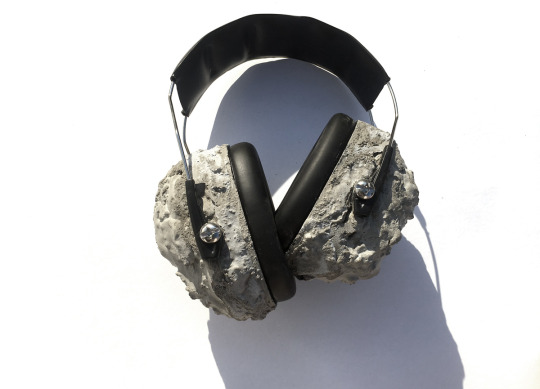
1 note
·
View note
Text
Tumbles and Falls

A wonderful image from Benji’s process for Assessment 2.
https://benjiadad1002.tumblr.com/
0 notes
Text
Blockchain and Art
DAOWO - The blockchain laboratory and debate series for reinventing the arts.

This series brings together artists, musicians, technologists, engineers, and theorists to join forces in the interrogation and production of new blockchain technologies. Our focus will be to understand how blockchains might be used to enable a critical, sustainable and empowered culture, that transcends the emerging hazards and limitations of pure market speculation of cryptoeconomics.
Intended as a temporary laboratory for the creation of a living laboratory, the inaugural workshop in the series takes a pragmatic approach towards building technical and economic capacity in the arts.
As the DAOWO series unfolds each lab will work across a spectrum of themes and domains of expertise, breaking down silos and assumptions about what these technologies might mean. The aim is to birth a new set of experimental initiatives which can reinvent the future of the arts as we know it.
http://www.daowo.org/
0 notes
Text
Furtherfield: (Conceptual) Art, Cryptocurrency and Beyond
Great article on currency and art here:
https://www.furtherfield.org/conceptual-art-cryptocurrency-and-beyond/

This is Caleb Larsen’s “A Tool To Deceive and Slaughter” (2009). It contains a computer that must be connected to the Internet as part of the conditions of ownership, which then immediately offers itself for sale on the eBay auction site.
2 notes
·
View notes
Text
Currency by Denis Beaubois
“Twenty thousand dollars, consisting of one hundred dollar bills, was presented as a simple sculptural object for auction through a fine art auction house in Sydney. The material/money for the work was sourced from a “New Work Established grant“ from the Visual Arts and Craft section of the Australia council for the Arts.
The currency used in the creation of the work was not altered or modified and retained its potential function and value as currency. However each hundred dollar bill had its serial number recorded to validate it as an authentic part of the work, thereby instilling a cultural value on top of the financial value. The tension between the economic value of the material against the cultural value of the art object was explored through the process of the financial transaction enabled by the auction.“
http://denisbeaubois.com/Currency/Currency.html
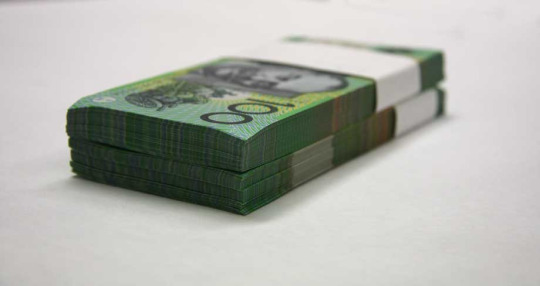
1 note
·
View note
Text
assesment one: artist statement
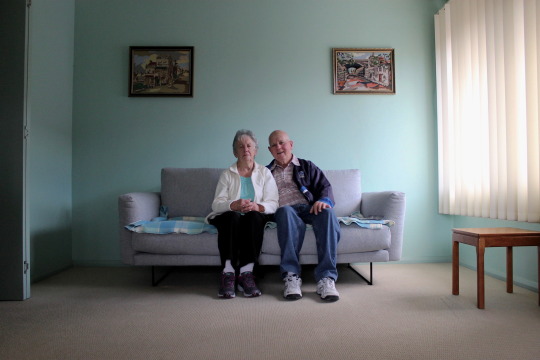
“I found this Parkinson’s does slow you down, whether you want to slow down or not” - Billy Graham
My family for the most part has always been reasonably healthy. We always went on hikes together and tried to watch what we ate. Despite this conscience effort to maintain an image of health, this all crashed and burned when my Nana was diagnosed with Parkinson’s and later Dementia. A once seemingly healthy 73 year old woman who went on weekly walks and played bowls rapidly disintegrated into a shell of who she used to be. Crying, panic attacks and forgetfulness soon became the new normal.
Through my poster I wished to explore the binaries of healthy and unhealthy. When this photograph was taken, it was probably the worse my Nana had been before she went to hospital and eventually passed away. There is a stark difference between My Nana and Pa’s facial expressions. My Pa is smiling of happiness despite what was happening in his life - emitting a picture of health. Whereas my Nana displays a more uncomfortable and disgruntled expression - displaying an image of unhealthiness due to her own mental struggles. I wanted this poster to not focus on the typical images of healthy and unhealthy (fat and skinny people) but rather the mental side of health.
by displaying both binaries of healthy and unhealthy literally side by side, i wanted to convey the debilitating effects of a mental disease on my Nana. By photographing the raw and real reality that these horrendous diseases pose to many families, including my own, i want to offer new isights into the world of binaries of healthy and unhealthy. Not only did my family watch her mental and physical health deteriorate but now due to this photograph, many others can see a new visual representation of healthy and unhealthy and disrupt their previous misconceptions.
2 notes
·
View notes
Photo
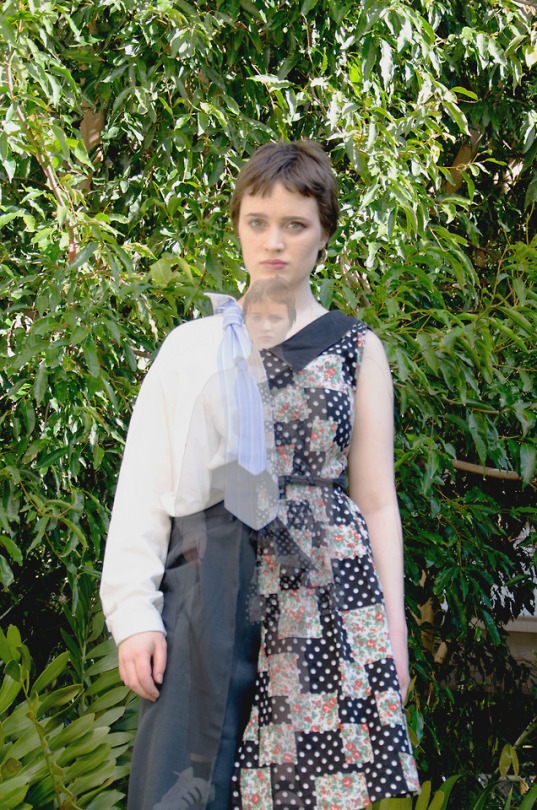
ASSESSMENT 1:
Q: Contemporary art and design often looks at the idea of constructed binaries such as man/woman, straight/gay, dirty clean, organic/synthetic. Considering the history of these ‘pairs’, how can art and design interrogate these binaries and offer new insight?
My poster is a greater reflection of the overall experimentation process undertaken. I wanted to explore the connection between society and gender- specifically the notion that gender is merely a socially constructed perception-and investigate a more encompassing idea of gender: androgyny.
I was initially inspired by posture magazine which explores identity, gender and sexuality through fashion and art, “challenging what it means to be non-binary in a binary world”. This lead me to Lyn Slater whom preaches a number of philosophies surrounding using fashion and appearance to portray what you are feeling on the inside which incited my thinking surrounding feminine ideals of beauty and masculine traits and specifically how these are relevant in determining and shaping ones’ emotions and identity for the day.
I created an outfit that simultaneously encapsulated the social normative ideals of the female and male appearance. My ‘outfit’ took its form through inspiration from artists such as Techna Nobles, Casey Legler Study video stills. This work showcases Casey Legler, a female model who models men’s fashion; the only one in the world who models clothes exclusively for the opposite sex.
This inspired me to splice both stereotypical feminine and masculine forms through an attempt to represent a modern-day perception of gender through androgyny.
I felt it was necessary for me to involve the general public with this experiment and create a work that was a representation of my own experience.
I donned the ‘outfit’ and emerged into the public, seemingly going about my daily business as an experiment in identifying the general public’s reaction when confronted with such boldly isolated and distinctive gender binaries.
The resulting poster is a personal look and representation into this confrontation with the figure effectively staring down the audience. This is emphasised through the second figure captured within the first, essentially trapped. The composition of presentation, with the appendages of the same photo on either size (within the constraints of A2 format) of the eyes main focus stimulates a sense of judgement from the figure.
This symbolises the feelings of confinement I felt when out in the public. However, the technique of transparency used represents, paradoxically the strange sense of-not quite freedom-but perhaps desire to further explore this notion through a more personalised element of performer, audience interaction.
I have referenced the audience through representing the ‘outfit’ along with the poster to invite the audience in and hopefully illicit a series of thoughts relating to their own sense of identity and gender.
References:
Art.uts.edu.au. (n.d.). Crystal Romeo – Casey Legler & Androgyny · UTS ART. [online] Available at: http://art.uts.edu.au/index.php/crystal-romeo-casey-legler-androgyny/ [Accessed 6 Aug. 2018].
Creators. (2016). This Magazine Challenges Mainstream Notions of Gender and Identity. [online] Available at: https://creators.vice.com/en_us/article/4xq8mj/posture-magazine-challenges-gender-identity [Accessed 5 Aug. 2018].
Harder-Montoya, M. (2018). The Accidental Icon on Ageism, Identity-Driven Style, and Sustainability. [online] Posture Magazine. Available at: http://posturemag.com/online/accidental-icon/ [Accessed 5 Aug. 2018].
Magazine, P. (2014). Is KPop as Queer as it Appears to be?: Androgynous Fashion, Fan Service, and Boy Love in Korean Pop Culture - Posture Magazine. [online] Posture Magazine. Available at: http://posturemag.com/online/is-kpop-as-queer-as-it-appears-to-be-androgynous-fashion-fan-service-and-boy-love-in-korean-pop-culture/ [Accessed 9 Aug. 2018].
Overmeyer, T. (2018). Lady Skollie: Visual Artist Exploring Sex, Gender Politics and Female Desire. [online] Culture Trip. Available at: https://theculturetrip.com/africa/south-africa/articles/lady-skollie-visual-artist-exploring-sex-gender-politics-and-female-desire/ [Accessed 4 Aug. 2018].
Phillips, K. (n.d.). Boys Will Be Boys? Exploring Gender Stereotypes and Biases in the Art Room - The Art of Ed. [online] The Art of Ed. Available at: https://www.theartofed.com/2017/12/28/boys-will-boys-exploring-gender-stereotypes-biases-art-room/ [Accessed 3 Aug. 2018].
1 note
·
View note
Photo

Concept Statement
Contemporary artists and designers often seek to dismantle socially constructed binaries in order to expose the reductive nature of these extremes and enlighten audiences on these perceptions. I focus on this interrogation of constructed binaries in my work “Choking on Lotuses” as I delve into the man/woman binary as well as the occident/oriental binary that has been constructed by Western society.
A lot of my process for the poster involved researching other artists that examined the gender and racial binary. Initially, I looked at the fetishization of Asian women in the media as I examined a few erotic posters and played around with those as a medium. I also experimented with colours and composition to achieve an effective artwork. The final work is illustrated digitally on Photoshop.
In my work, I attempt to explore the stereotypes associated with Asian women and how this dangerous fetishization can impact the lives of Asian women. My work features the motif of lotus flowers, which is often a “complimentary” term for Asian women, as they are referred to as “delicate lotus flowers”. Lotus flowers are also symbolic of “purity”, as they appear clean and pure against the background of a dirty swamp. Again, this reinforces the notion of Asian women being “pure” and “untainted” by Western audiences. Therefore, in order to highlight the harmfulness of these stereotypes, I use abstract colours to suggest the “purification” of the woman in the pond as her face appears pale to her red body. Additionally, the placement of the lotus flower over her mouth emphasises her submission to these gender and racial expectations as she has been silenced. Hence, the abstract use of colours and her confronting gaze aims to make audiences uncomfortable at her demise, and ultimately enlightening them of the damaging nature of such binaries between gender and race.
4 notes
·
View notes
Photo

“Contemporary art and design often looks at the idea of constructed binaries, suchh as man/woman, soft/hard, straight/gay, dirty/clean, organic/synthetic. Considering the history of these ‘pairs’, how can art and design interrogate these binaries and offer new insights?”
“Ever notice there’s the word “mask” in masculine?” — Jean-Luc Godard, Masculin Féminin
The constructed binary of masculinity as opposed to femininity is one enveloped in assumptions and connotations, predominantly the stigma that there should be no overlap between the two. I started this assessment with the intention of interpreting a traditionally male figure with feminine attributes in order to subvert the meaning.
Using the symbolism of drag queens to manipulate the recognisable image of king playing cards, an icon that is not necessarily masculine, but one that is obviously male, I hope to have bridged the gap between femininity and masculinity. This is not a work that compares the binaries of masculine and feminine personalities, one versus the other. This is a work that intends to offer a way of considering both sides together, in a way that promotes neither on its own, instead encouraging the operation of both to form a cohesive unit.
This poster is reflective of males being feminine, as well as women being masculine, even though the work seems to focus more on the former. The variety of portraits range from more obviously drag representations, to ostensibly female characters. This is intended to depict the ways in which men can be both incredibly feminine and sometimes only a little, as well as everything in between. Although the depictions are only male the work aims to encourage the responder to consider the opposite — females who can be in any way masculine.
1 note
·
View note
